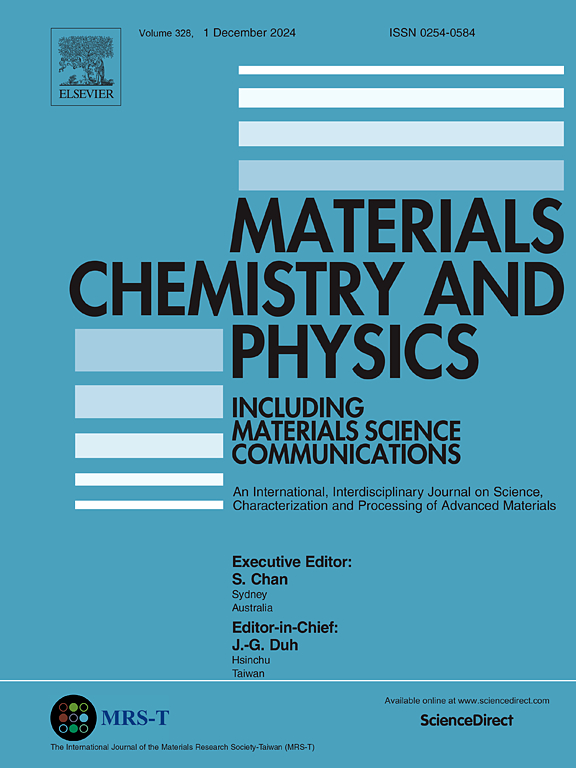Tailoring structural and electrical properties in cobalt-doped Ag0.2Na0.8NbO3 ceramics for advanced electronic applications
IF 4.3
3区 材料科学
Q2 MATERIALS SCIENCE, MULTIDISCIPLINARY
引用次数: 0
Abstract
In this work, environment-friendly lead-free polycrystalline ceramic samples of cobalt doped silver sodium niobate with composition Ag0.2CoxNa0.8-xNbO3 (with x = 0, 0.02, 0.04, 0.06, 0.08) had been prepared by using solid-state reaction technique and effect of Co-doping on dielectric, electrical and ferroelectric properties had been reported. Analysis of X-ray diffraction (XRD) data confirmed the perovskite orthorhombic structure in all specimens with decreasing average crystallite size on increasing Co-content. Scanning Electron Microscopy (SEM) investigation indicated reduction in average grain size from 1.69 μm to 1.29 μm as concentration of cobalt grew from 0 to 0.08. Impedance analyzer had been used to measure dielectric constant and tangent loss over the frequency range from 20 Hz to 10 MHz for temperatures varying from 250 C to 3500 C. Both the dielectric constant as well as tangent loss were found to follow a declining trend with the rising frequency as well as rising dopant content. Impedance had also been analyzed to get information on the conduction mechanism and role of grain boundaries over grains had been deduced to be dominant. Ferroelectric behavior of specimens had been assessed through polarization-electric field (P-E) loop measurements that depicted the presence of moderate polarization levels and relatively high coercive field in all specimens making them versatile for advanced electronic applications.
用于先进电子应用的钴掺杂Ag0.2Na0.8NbO3陶瓷的结构和电学性能
本文采用固相反应技术制备了成分为Ag0.2CoxNa0.8-xNbO3 (x = 0、0.02、0.04、0.06、0.08)的钴掺杂银铌酸钠环保型多晶陶瓷样品,并报道了共掺杂对介电、电学和铁电性能的影响。x射线衍射(XRD)数据分析证实了所有样品均呈钙钛矿正交结构,随着co含量的增加,平均晶粒尺寸减小。扫描电镜(SEM)研究表明,当钴浓度从0增加到0.08时,合金的平均晶粒尺寸从1.69 μm减小到1.29 μm。用阻抗分析仪测量了温度从250℃到3500℃,频率从20 Hz到10 MHz范围内的介电常数和切线损耗,发现介电常数和切线损耗随频率的升高和掺杂量的增加呈下降趋势。对阻抗进行了分析,得到了导电机理的信息,并推导出晶界对晶粒的主导作用。通过极化电场(P-E)环路测量来评估样品的铁电行为,该测量描述了所有样品中存在的中等极化水平和相对较高的矫顽力场,使其适用于先进的电子应用。
本文章由计算机程序翻译,如有差异,请以英文原文为准。
求助全文
约1分钟内获得全文
求助全文
来源期刊

Materials Chemistry and Physics
工程技术-材料科学:综合
CiteScore
8.70
自引率
4.30%
发文量
1515
审稿时长
69 days
期刊介绍:
Materials Chemistry and Physics is devoted to short communications, full-length research papers and feature articles on interrelationships among structure, properties, processing and performance of materials. The Editors welcome manuscripts on thin films, surface and interface science, materials degradation and reliability, metallurgy, semiconductors and optoelectronic materials, fine ceramics, magnetics, superconductors, specialty polymers, nano-materials and composite materials.
 求助内容:
求助内容: 应助结果提醒方式:
应助结果提醒方式:


